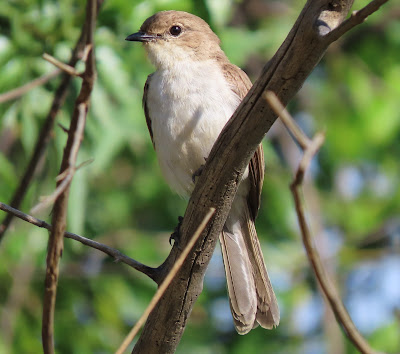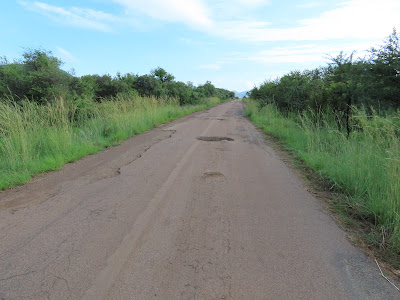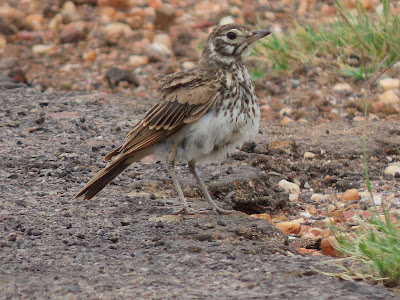I left for the Cape a few days early so that I could catch with the Kings in Riebeeck Kasteel and was greeted with temperatures of 40 to 45 C for the duration. Still a favourite spot with the Swartberg looming over the village.
A wonderful air-conditioned room and pool made the heat a non-issue and great company and spectacular sunsets were the cherry on top.
The night before boarding was spent with Jane and Amber in Marina da Gama with superb views and mating great crested grebes out front.
Having been advised that my boarding time was 12.30 pm and warned not to come early, it was with some consternation that I discovered that I'd missed the boat when I arrived at 12.25. A member of the MSC staff then assured me that a plan was afoot to get the 30 odd passengers still on land out to the ship. Apparently a big blow was on it's way and on a previous occasion the liner was unable to get out the harbour, hence the decision to leave early and anchor off Robben Island. They then unshipped 3 lifeboats and sent them back for us but we had to be bussed to the V&A Waterfront to be loaded along with a late milk delivery! All of which took a mere 4 hours. These two were waiting at our embarkation point, but weren't invited aboard.

We eventually got under way but it was a false alarm as we were then required to await the arrival of the NSRI which was needed to oversee the transfer to the liner for some unknown reason. On the trip out to MSC Orchestra we experienced the worst seas of the whole cruise, the not so little lifeboat being tossed around like a cork while the NSRI boat kept station with half a dozen volunteers onboard.
As we approached the ship from the rear there were no photo opportunities so had to lift this photo off the internet.

Once aboard, it was anchors aweigh as the Prince Edward Islands awaited approximately 1 800 km south. The weather kindly provided the cloth for Table Mountain!

This trip was originally scheduled for 2020 but you all know what happen that year, so by the time things went ahead MSC had swapped ships for reasons unknown. I had reserved an inside cabin as it was cheap but was pleased to note that I'd been upgraded to an outside cabin..................with what they coyly called an obstructed view. Turns out the obstruction was the top of a life boat but when the ship rolled slightly to port you could just glimpse the sea! Still it was real sunshine and very comfortable.
There was a very slight swell running which was only just felt as 80 000 tons and stabilizers take some shifting and by sunset it was almost flat and stayed that way for most of the week aboard.
Two days and three nights were required to get to the islands though there was a continuous buzz whenever birds appeared. There were 40 official guides aboard but as the lowest observation points were on deck seven, basically 3 stories above the water, which made things a tad difficult for aging eyes. However with my own personal guide in the form of the very experienced Richard Everett I managed to add eight species to the old life list. Finding him among the crowds on the decks took a while until I remembered to look at feet rather than faces - he eschews shoes!
Some of the bigger species were fairly easy to photograph with my far from ideal camera so I managed to get a southern giant petrel which is as large as an albatross but not as elegant......
..........but dove sized prions and storm-petrels were a challenge - this I was assured is Salvin's prion though they all look the same to me.
The only place where the pitch was noticeable was either at the bow or on the pool deck where the water slopped about a bit.
Albatrosses are the epitome of perfection when it comes to flight and the massive wandering albatross with a wingspan of 3.5 m performs staggering feats with consummate ease. To get an idea of it's size take a gander at the dove sized prion in the lower left hand corner!
These birds leave their island nest site and spend up to 7 years at sea with absolutely no adult coaching or flight experience, covering vast distances with nary a wing flap. Awesome creatures.
Food is available 24/7 but the main dining room required a degree of dress which I haven't possessed in 20 years, so the place for me was on deck 14 and in one corner you could sit in a wing suspended 10 stories above the waves.
We've all those read horror stories about the violence of the "roaring forties"..............this was our experience!

Jo and I went on the first "Flock at Sea" voyage, organised by BirdlifeSA which went up the west coast to Walvis Bay. We attended a lecture by a giant among the sea birding fraternity, Peter Harrison and it was his passion for albatrosses, and the sooty albatross in particular, that was the primary incentive to join the "Flock to Marion" cruise. Sooties are not the biggest but certainly one of the most beautiful of the albatrosses and Marion Island is one of their main breeding grounds. However like all the birds that nest there, the chicks are being literally eaten alive by house mice. The mice were accidentally introduced by sealers and soon became enough of problem to warrant cats which then tuned their attention to birds, who had never before met a predator. The cats were finally eliminated in 1996 but the rodent population exploded, so one of the main reasons for this cruise was to raise funds to undertake the biggest "mouse free island" project ever. It will kick off in 2024 and will be a staggering exercise, costing hundreds of millions of rand. Ah the folly of mankind.

Wanderers start life as mostly black fledglings and gradually become whiter until around their 20th year they are mostly white and ringed birds have been known to live for over 50 years.
And after a hard days birding.................
There are only two islands in the group but the ship was not granted permission to get closer than 12 nautical miles so we skimmed Gough which was barely visible and were due to overnight off Marion......
................however the weather finally decided to give us a taste of the Antarctic and with a storm front approaching and swells predicted to be 9 to 12 m the captain decided to cut and run. So we only knew where Marion was by what I believe to be called a catabatic cloud formation above it. When were past the island and making the turn for home, the winds reached around 100 kph and created an interesting list until it was fully astern.
The birding around the islands was nothing short of stupendous with thousands of albatross consisting of at least 5 different species and many others. Although my personal list contained only 17 species, they were all birds you'd never see unless you were out at sea, so all very special
The trip back was quiet but relaxing and it was with mixed feelings that Durban hove into sight on day seven, the most noticeable feature being the World Cup white elephant that is the Moses Mabida Stadium on the right.






















































